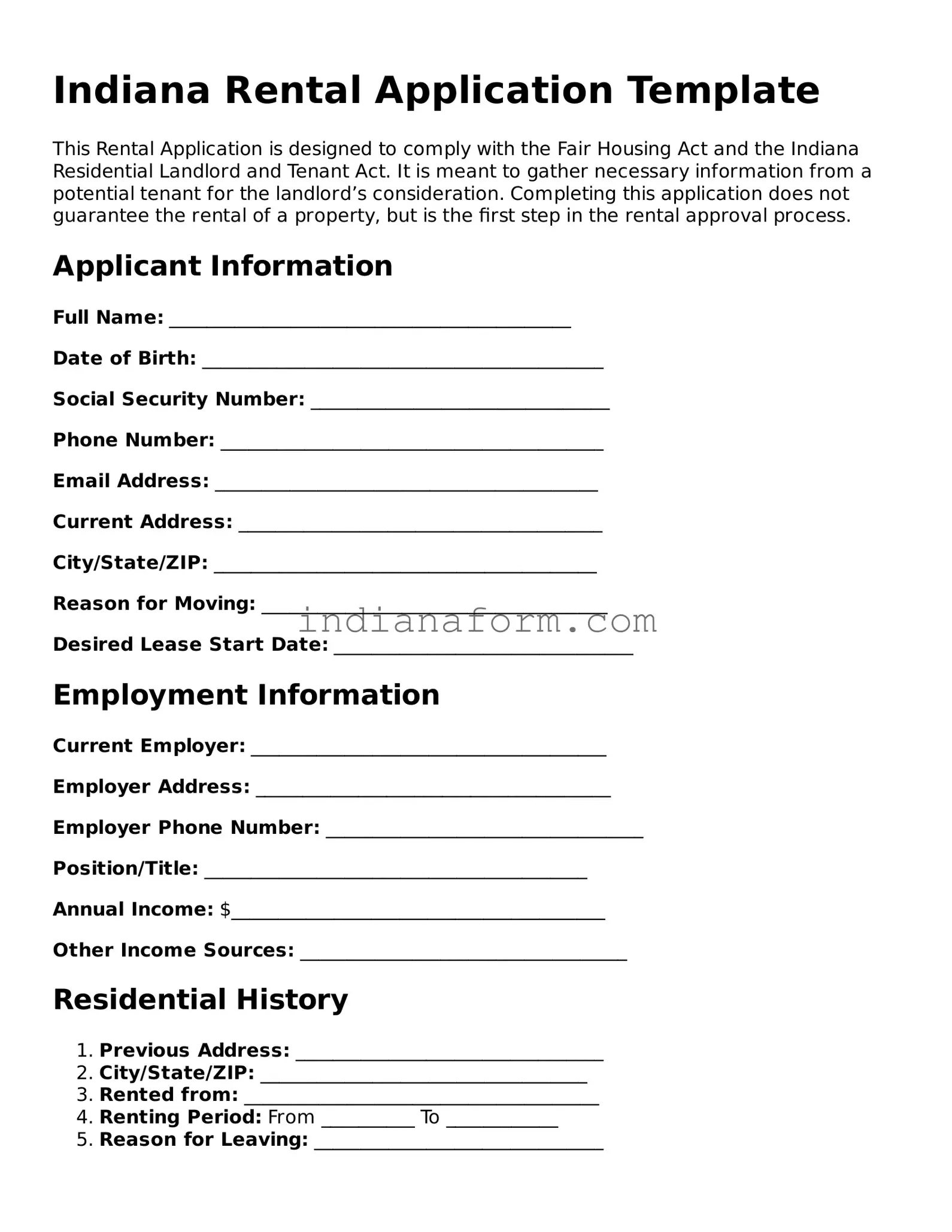What is the purpose of the Indiana Rental Application form?
The Indiana Rental Application form is designed to gather comprehensive information from prospective tenants interested in leasing a property within the state of Indiana. Its primary goal is to enable landlords to effectively assess the suitability of applicants based on factors like rental history, employment status, income, and personal references. This thorough evaluation assists in ensuring that selected tenants are reliable and capable of upholding their rental agreement obligations.
Who should fill out the Indiana Rental Application form?
Any individual or individuals over the age of 18 who are interested in renting a residential property in Indiana should complete the Rental Application form. It's important that each adult planning to reside in the rental unit provides their information on separate or joint application forms as required by the property manager or landlord. This is essential for landlords to conduct background checks and make informed decisions about potential tenants.
Is there a fee to submit the Indiana Rental Application form?
Yes, often landlords or property managers may require an application fee to cover the costs associated with processing the Rental Application. This fee can vary widely depending on the location and the landlord's policies. It's typically non-refundable and pays for the credit and background checks essential in evaluating the applicant's eligibility for tenancy. Applicants should inquire directly with the property manager or landlord about the exact fee and its use.
What kind of information do I need to provide on this form?
The Indiana Rental Application form requires a variety of information from applicants, including personal identification details (such as full name and social security number), current and previous addresses, employment history, income information, and references. Additional information may also be requested, such as a driver's license number, vehicle details, and pet information if applicable. Applicants should be prepared to provide comprehensive information to help the landlord evaluate their application thoroughly.
How long does the process take after submitting the form?
The processing time for a rental application can vary. Typically, it takes landlords or property managers a few days to a week to review an application, conduct necessary background and credit checks, and make a decision. However, this timeframe can be shorter or longer based on the number of applications received, the efficiency of the screening process, and specific landlord or property management practices. Applicants should follow up if they haven't received a response within a week of submission.
What happens after I submit the Indiana Rental Application form?
After submission, the landlord or property manager will review the information provided, verify it, and conduct background and credit checks to assess your suitability as a tenant. They might also contact your references. If your application is approved, the landlord will likely contact you to discuss the next steps, which typically include signing a lease agreement and paying the security deposit and first month's rent. If your application is not approved, it is a common courtesy for the landlord to inform you, although specific feedback on the decision may not always be provided.
Can I be denied tenancy after submitting the Indiana Rental Application form?
Yes, applicants can be denied tenancy based on the findings during the application review process. Reasons for denial could include insufficient income to meet the rental property's requirements, a history of eviction, poor credit history, or unfavorable references. Landlords must comply with fair housing laws and cannot deny applications based on discriminatory reasons. If denied, applicants have the right to ask for the specific reasons behind the decision and, in some cases, may have grounds to dispute the denial if they believe it was made on a discriminatory basis.
